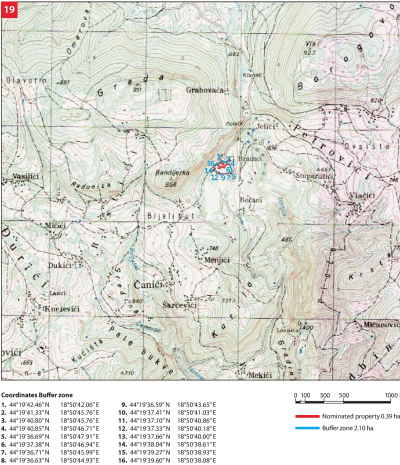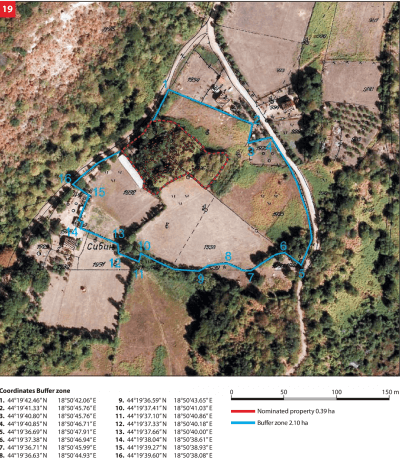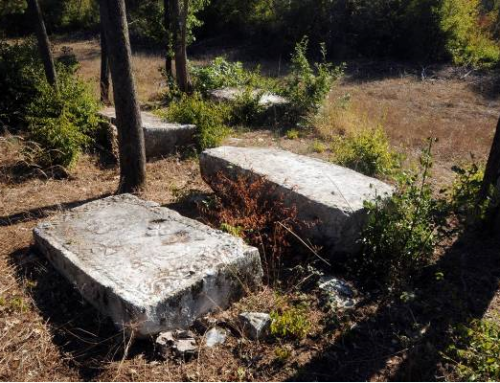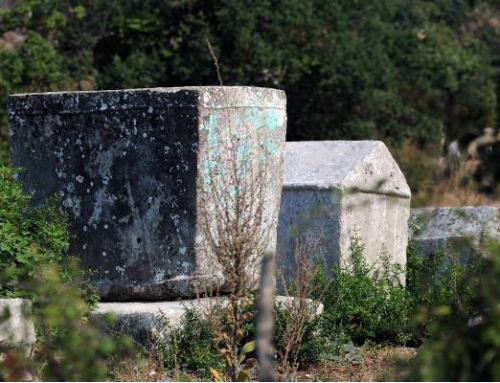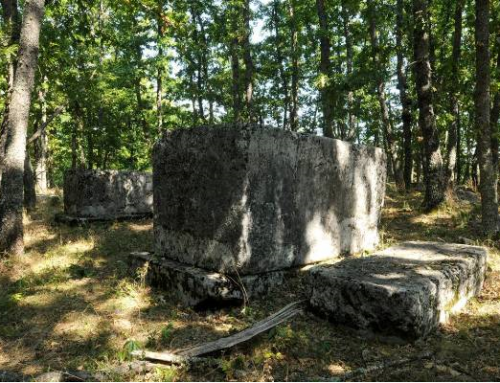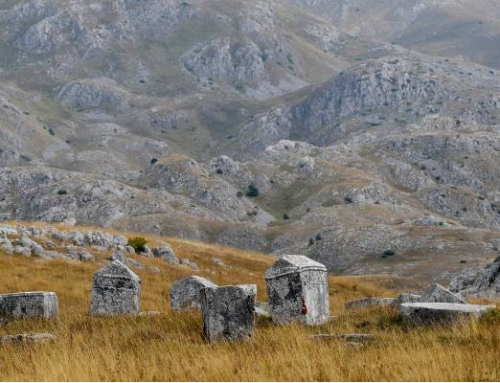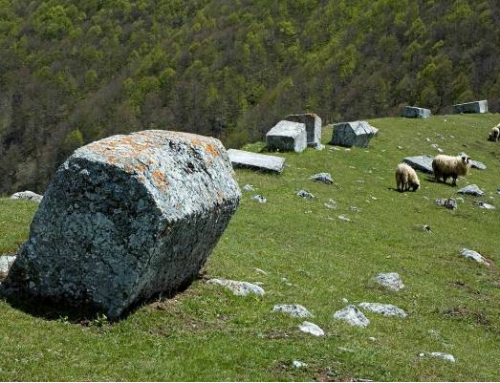About

The necropolises named Ispod stijene (Under a rock) and Pola stijene (Half a rock) are located in the village of Bečani, in the Brajinci area, which is about three kilometres to the north-west of the centre of the Municipality of Šekovići. According to the data available to the Commission to Preserve National Monuments, the necropolis consisted of 138 visible tombstones – 4 slabs, 15 chests, 41 gabled roof tombstones , 77 pillars and one sunken tombstone of indeterminate shape.
According to the data obtained following research carried out by the Institute for Protection of Cultural, Historical and Natural Heritage of Republika Srpska /Republički zavod za zaštitu kulturno istorijskog i prirodnog naslijeđa RS/ in 2012, a total of 172 tombstones were recorded, of which 11 chests, 2 chests with bases, 26 slabs, 35 gabled roof tombstones, 1 gabled roof tombstone with base, 21 fragments and 74 pillars.
Four main shapes are represented – slabs, chests, gabled roof tombstones and pillars. There are different types of pillars: pillars in the shape of upright slab (rectangular parallelepiped) which widens upwards, with gable-roof, flat or arched tops and pillars in the shape of upright chests (rectangular parallelepiped), widening upwards and with the top in different shapes: gable-roof, flat or arched or with a lipped arch. Seven tombstones – 2 gabled roof monuments and 5 pillars, are decorated with a crescent moon and sword.
No inscriptions have been recorded.
The area of Šekovići has been inhabited since ancient times and it has been very active in terms of culture and communications. Important routes connecting the area east of the Drina River and central Bosnia passed through the area since antiquity. A number of toponyms such as Kaštielja (Castle), Grada (town), Gradine or Crikvina (church) testify to this. These are located near the famous Lomnica monastery. Some of them still have strong masonry structures.
Archaeological excavations of the remains and other medieval monuments have not been conducted to this day. Due to the lack of scientific data, it may only be noted that those were populated areas with a significant activity in the past, but no concrete time-specific events and changes nor any older places of worship may be determined. At that time, a very important communication line in the area linked the Drinjača River valley over Vlasenica with Central Bosnia. Numerous necropolises with tombstones, some of them decorated with the vine motif, are testaments to intensive medieval life. Until the end of the 17th century, Šekovići had been relatively densely populated. Then military ransacking or diseases waned and nearly exterminated the old inhabitants instead of which new ones came from Herzegovina representing the largest part of today’s population.
Location
The necropolis is located on a small plateau below a rock called Pola stijene (Half a rock) by local residents of the village of Bečani. The southern and northern boundaries of the protected area are defined by a local road.
State of the location
The necropolis is in good state, although some of the tombstones are chipped, damaged, tumbled, partially or entirely sunken. The tombstones are more or less covered by plant organisms (lichen and moss). Some of them are covered with thorns and sunken, which is why they cannot be examined in their entirety.
To determine the final number of decorated tombstones, the necropolis needs to be cleaned, which primarily implies removal of low vegetation, thorns and moss, and research work that would provide final data about representation and diversity of decorative motifs. In 2011 the entire site underwent geodetic survey supported with photographs of individual tombstones thus enabling for implementation of a monitoring process.
FAQ
Facilities for visitors and infrastructure
The current tourist offer for visitors does not meet the standard requirements, i.e. apart from sightseeing there is nothing else available. There are no data on visits to the site. The Municipality has the potential for developing rural and religious tourism. Five NGOs are active in the territory of the municipality.
